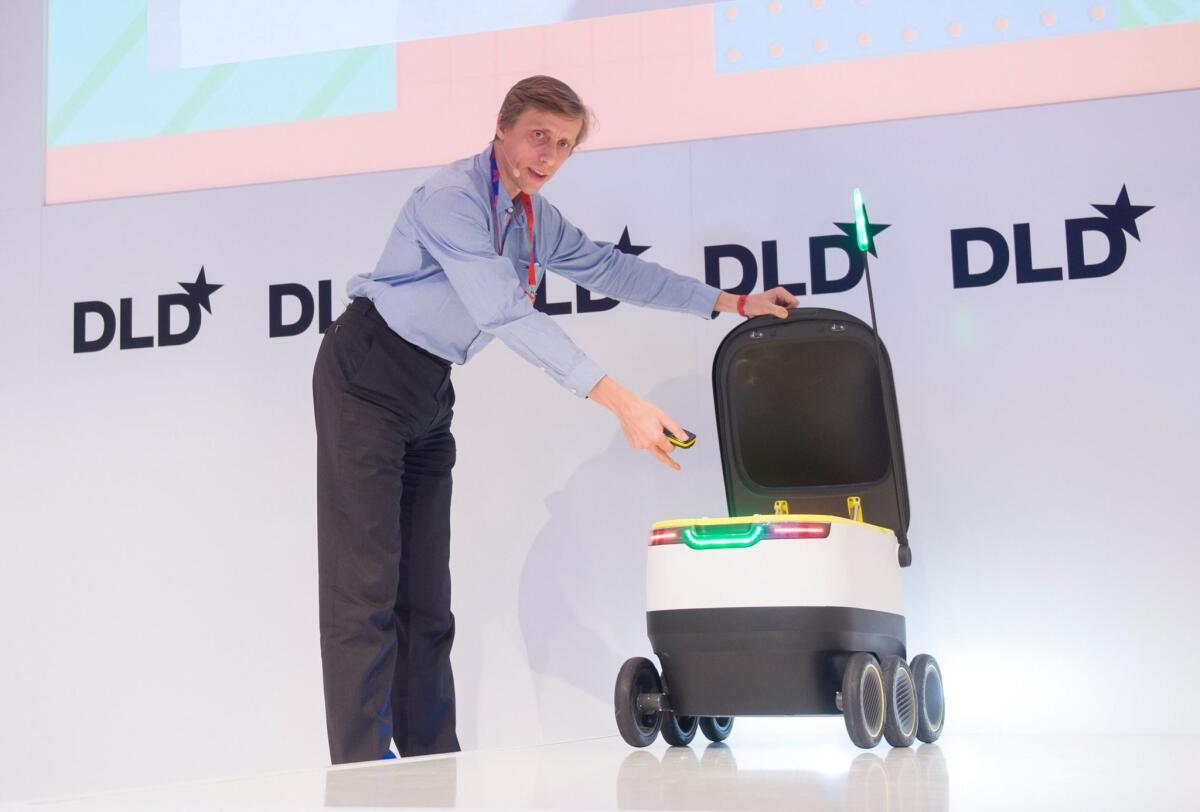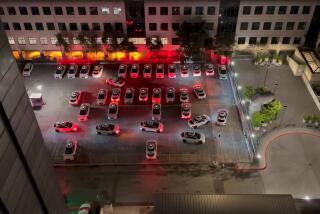Self-driving robots may someday make local deliveries in 30 minutes or less

Ahti Heinla of Starship Technologies presents a wheeled delivery robot at the Digital-Life-Design conference in Munich, Germany on Jan. 18, 2016.
The future of delivery might involve small drones zooming above pedestrians, cyclists and motorists at high speeds. Amazon and now Wal-Mart are moving down this path. Or it might be something a lot slower that travels on sidewalks.
A London start-up founded by two Skype co-founders unveiled a self-driving delivery robot in November. It bumbles along at a whopping 4 mph.
That’s slightly faster than a pedestrian but slower than a jogger.
Starship Technologies says the 40-pound robot could make local deliveries in 30 minutes or less. The technology could be useful for neighborhood restaurants and retailers.
SIGN UP for the free California Inc. business newsletter >>
Because the robot is largely automated, requiring almost no human involvement, Starship Technologies thinks the cost of delivering goods will drop by an order of magnitude. The slow speed and grounded approach also removes some of the safety concerns with drone delivery.
A customer could follow the robot’s progress on an app, and would be alerted when his or her delivery arrives. The cargo bay is locked to prevent theft, which only the customer could open with the app’s help.
Starship is designed to be 99% self-driving, with difficult situations handled by a remote human operator. The approach is reminiscent of one Google patented for aiding its self-driving cars in sticky spots.
“The robots will cross the streets very much like the humans do: Stop, look both ways, and wait until it is safe to cross,” Starship Technologies Chief Executive Ahti Heinla said. “The robot can recognize approaching cars with its sensor suite from 100 to 200 meters and will cross the streets only in locations with great visibility.”
Starship Technologies imagines selling the robots as a service. Businesses could pay the start-up for every delivery made. Or they could buy the platform and pay for the operators and maintenance.
The start-up says that it will be conducting a pilot study early this year in Greenwich, London, and that it’s in talks with several companies about using Starship. So far the prototype has been driven in San Francisco, New York, Boston and other cities. Starship Technologies says the Royal Borough of Greenwich granted it permission to conduct its trial.
See more of our top stories on Facebook >>
Starship Technologies maps out areas ahead of time so that the robot can navigate safely on its own. It relies on sensors and cameras to maintain an awareness of its surroundings. It includes speakers so that a distant operator can speak to pedestrians.
“If somebody bothers the robot, the operator can actually shout — ‘Hey, what are you doing?’” Heinla told the BBC. “If somebody tries to steal something the operator can actually yell, ‘The police are coming in five minutes! We know your location; you’re being filmed as well.’”
Starship is 26 inches long, 21 inches wide and 22 inches high. The company says that future models could come in different sizes. Starship isn’t built to carry hot foods such as pizza, but it’s planning future models with thermal insulation.
Borrowing a page from the Google self-driving car, the robot created by Starship Technologies looks cute and harmless. Heinla and Janus Friis are funding the start-up themselves.
Matt McFarland is the editor of Innovations for the Washington Post.
ALSO
Food delivery start-ups raise plenty of funding but face lots of competition
These Stanford graduates want to help you run a YouTube empire
Uber will pay $28.5 million to settle two class-action lawsuits over safety claims






